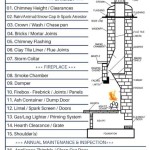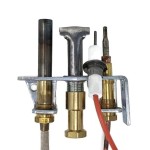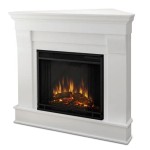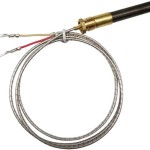Can Granite Be Used For A Fireplace Hearth? A Comprehensive Guide
The fireplace hearth serves as a crucial element in the overall design and functionality of a fireplace. It provides a non-combustible surface that protects the flooring beneath from sparks, embers, and radiant heat. The selection of the right material for a hearth is paramount, balancing aesthetic appeal with safety and durability. Granite, a natural igneous rock renowned for its strength and heat resistance, is often considered a suitable option. This article delves into the suitability of granite for fireplace hearths, exploring its properties, advantages, disadvantages, installation considerations, and maintenance requirements.
Understanding the properties of granite is essential to determining its appropriateness for use in a fireplace hearth. Granite is primarily composed of feldspar, quartz, and mica minerals. This composition contributes to its exceptional hardness and resistance to abrasion, making it a durable choice for high-traffic areas. Furthermore, its crystalline structure allows it to withstand high temperatures without significant degradation. Certain varieties of granite contain trace amounts of minerals that can cause discoloration or cracking under extreme heat, although this is relatively rare. The porosity of granite varies depending on the specific type and sealant application. A well-sealed granite surface will resist staining from soot and ash, simplifying cleaning and maintenance.
The inherent beauty of granite adds a touch of elegance to any fireplace setting. It's available in a wide range of colors, patterns, and finishes, allowing homeowners to customize the hearth to complement their interior design. From classic black granite to intricate veined patterns, the aesthetic possibilities are vast. The natural variations in granite slabs ensure that each hearth is unique, adding character and sophistication to the fireplace area.
Advantages of Using Granite for a Fireplace Hearth
Granite offers a plethora of advantages when used as a fireplace hearth material. Its inherent properties contribute to its longevity, safety, and aesthetic appeal.
Exceptional Heat Resistance: Granite's ability to withstand high temperatures is a key advantage. A fireplace hearth is constantly exposed to radiant heat, and granite can handle these temperatures without warping, cracking, or melting. This heat resistance makes it a safe and reliable choice for protecting the surrounding floor and structures from fire hazards. The degree of heat resistance is significantly higher than materials like wood or certain types of tile that are not specifically designed for fireplace applications.
Durability and Longevity: Granite is an extremely durable material that can withstand years of use. Its resistance to scratches, impacts, and abrasion ensures that the hearth maintains its aesthetic appeal over time. Unlike softer materials, granite is less likely to chip or crack under pressure. This durability reduces the need for frequent repairs or replacements, making it a cost-effective solution in the long run. The robust nature of granite ensures peace of mind, knowing that the hearth will withstand the daily rigors of fireplace use.
Aesthetic Versatility: The wide array of colors, patterns, and finishes available in granite allows for seamless integration into various design styles. Whether a homeowner prefers a modern, minimalist look or a more traditional, rustic aesthetic, there is a granite option to match. The natural beauty of granite adds a touch of sophistication to the fireplace, enhancing the overall ambiance of the room. The availability of different edge profiles further enhances the design flexibility, allowing for customization to suit individual preferences.
Disadvantages and Considerations When Using Granite
While granite offers numerous benefits, there are also certain disadvantages and considerations that homeowners should be aware of before making a decision.
Cost: Granite is generally more expensive than other hearth materials, such as concrete or some types of tile. The cost of the granite itself, coupled with the expense of professional installation, can make it a significant investment. However, it's important to consider the long-term value and durability of granite when weighing the costs. Comparing prices from different suppliers and installers can help in finding the most competitive rates. While the initial cost may be higher, the extended lifespan and reduced maintenance can offset the expense over time.
Weight: Granite is a heavy material, which can pose challenges during installation. The weight requires a strong subfloor to support the hearth, and professional installation is often recommended to ensure proper handling and secure placement. Attempting to install a granite hearth without the necessary expertise and equipment can lead to structural damage or personal injury. The weight also affects transportation costs, adding to the overall expense of the project.
Porosity and Staining: While granite is generally non-porous, it does have some degree of porosity, making it susceptible to staining if not properly sealed. Soot, ash, and spilled liquids can penetrate the surface and cause discoloration. Regular sealing is necessary to protect the granite and maintain its appearance. The frequency of sealing depends on the type of granite and the level of usage. Periodic cleaning with a pH-neutral stone cleaner is also recommended to prevent the buildup of grime and stains.
Installation and Maintenance of a Granite Hearth
Proper installation and regular maintenance are crucial for ensuring the longevity and performance of a granite fireplace hearth.
Installation Process: The installation of a granite hearth typically involves preparing the subfloor, applying a layer of mortar, and carefully positioning the granite slab. The subfloor must be level and strong enough to support the weight of the granite. A professional installer will ensure that the hearth is properly aligned and securely bonded to the subfloor. The use of appropriate setting materials and techniques is essential to prevent cracking or shifting over time. Grouting between the granite slab and the surrounding floor is also necessary to create a seamless and aesthetically pleasing finish. Proper ventilation and safety precautions should be observed during the installation process.
Sealing and Cleaning: Sealing the granite surface is essential to protect it from stains and moisture. A high-quality stone sealant should be applied according to the manufacturer's instructions. The frequency of sealing depends on the type of granite and the level of usage, but it is generally recommended to reseal the hearth every one to two years. Cleaning the granite hearth should be done with a pH-neutral stone cleaner to avoid damaging the surface. Harsh chemicals and abrasive cleaners should be avoided, as they can etch or discolor the granite. Regular dusting and wiping with a damp cloth can help to prevent the buildup of grime and soot. Promptly cleaning up spills can prevent staining and maintain the hearth's appearance.
Long-Term Maintenance: Regular inspections of the granite hearth can help to identify any potential problems, such as cracks or chips. Addressing these issues promptly can prevent further damage and extend the lifespan of the hearth. If any cracks or chips are detected, a professional stone repair specialist should be consulted. Proper ventilation around the fireplace is also important to prevent the buildup of moisture and soot. Keeping the fireplace clean and well-maintained will also help to protect the hearth from damage. Over time, the granite may require professional polishing to restore its shine and remove any surface imperfections.
In summary, granite presents a compelling choice for fireplace hearths due to its inherent heat resistance, durability, and aesthetic versatility. However, homeowners must also consider its cost, weight, and potential for staining. Proper installation and regular maintenance are important for maximizing the lifespan and performance of a granite hearth. By carefully weighing these factors, homeowners can make an informed decision and create a safe and visually appealing fireplace area.

Why Is Granite A Great Choice For Fireplace Moreno

Granite Hearth Slab Ideas For All The Luxurious Home

Which Material Is Best For Your Fireplace Hearth The Only Way Granite

5 Granite Colors For Chic Modern Fireplace Msi Surfaces

Hearth Stone For Fireplace From Outdated To Outstanding

China Customized Granite Slab For Fireplace Hearth Suppliers Whole Service Xuri Stone

What Is A Fireplace Hearth

Fire Hearths

Fireplace Mantel Surround With Granite Hearth Monk S In

Custom Granite Hearths Made To Measure Hearth Delivery








